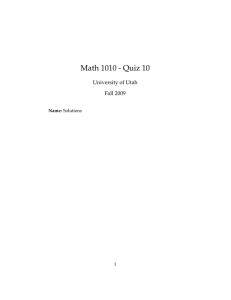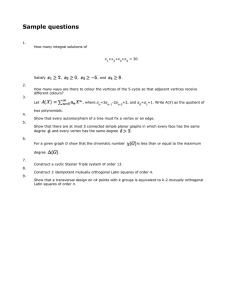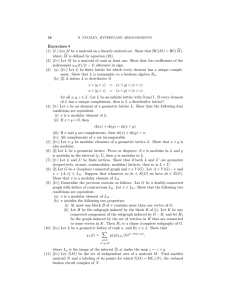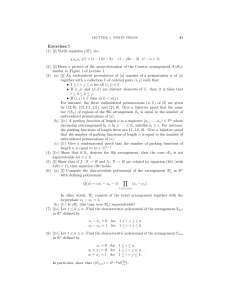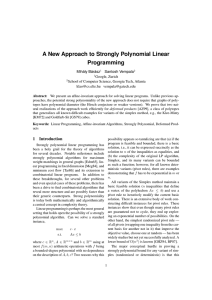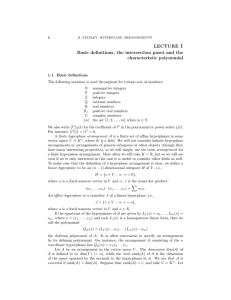Exercises 2
advertisement
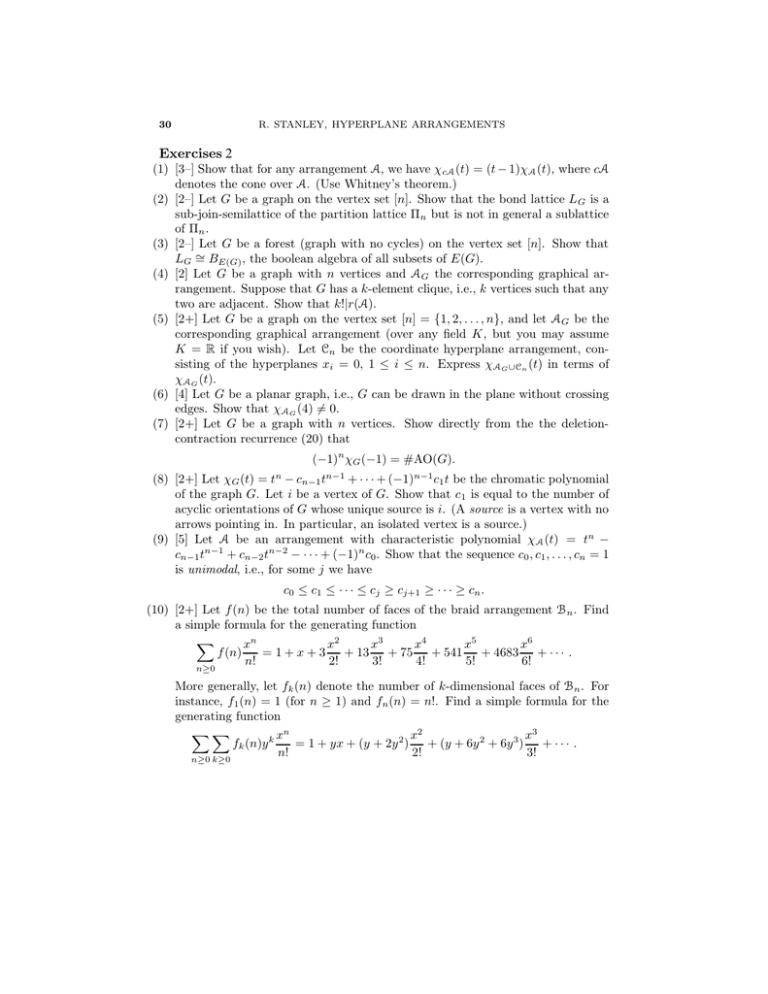
30
R. STANLEY, HYPERPLANE ARRANGEMENTS
Exercises 2
(1) [3–] Show that for any arrangement A, we have ψcA (t) = (t − 1)ψA (t), where cA
denotes the cone over A. (Use Whitney’s theorem.)
(2) [2–] Let G be a graph on the vertex set [n]. Show that the bond lattice LG is a
sub-join-semilattice of the partition lattice Γn but is not in general a sublattice
of Γn .
(3) [2–] Let G be a forest (graph with no cycles) on the vertex set [n]. Show that
LG ∪
= BE(G) , the boolean algebra of all subsets of E(G).
(4) [2] Let G be a graph with n vertices and AG the corresponding graphical ar­
rangement. Suppose that G has a k-element clique, i.e., k vertices such that any
two are adjacent. Show that k!|r(A).
(5) [2+] Let G be a graph on the vertex set [n] = {1, 2, . . . , n}, and let AG be the
corresponding graphical arrangement (over any field K, but you may assume
K = R if you wish). Let Cn be the coordinate hyperplane arrangement, con­
sisting of the hyperplanes xi = 0, 1 → i → n. Express ψAG �Cn (t) in terms of
ψAG (t).
(6) [4] Let G be a planar graph, i.e., G can be drawn in the plane without crossing
edges. Show that ψAG (4) =
⇔ 0.
(7) [2+] Let G be a graph with n vertices. Show directly from the the deletioncontraction recurrence (20) that
(−1)n ψG (−1) = #AO(G).
(8) [2+] Let ψG (t) = tn − cn−1 tn−1 + · · · + (−1)n−1 c1 t be the chromatic polynomial
of the graph G. Let i be a vertex of G. Show that c1 is equal to the number of
acyclic orientations of G whose unique source is i. (A source is a vertex with no
arrows pointing in. In particular, an isolated vertex is a source.)
(9) [5] Let A be an arrangement with characteristic polynomial ψA (t) = tn −
cn−1 tn−1 + cn−2 tn−2 − · · · + (−1)n c0 . Show that the sequence c0 , c1 , . . . , cn = 1
is unimodal, i.e., for some j we have
c0 → c1 → · · · → cj ⊂ cj+1 ⊂ · · · ⊂ cn .
(10) [2+] Let f (n) be the total number of faces of the braid arrangement Bn . Find
a simple formula for the generating function
�
xn
x2
x3
x4
x5
x6
f (n)
= 1 + x + 3 + 13 + 75 + 541 + 4683 + · · · .
n!
2!
3!
4!
5!
6!
n∗0
More generally, let fk (n) denote the number of k-dimensional faces of Bn . For
instance, f1 (n) = 1 (for n ⊂ 1) and fn (n) = n!. Find a simple formula for the
generating function
��
x2
x3
xn
fk (n)y k
= 1 + yx + (y + 2y 2 ) + (y + 6y 2 + 6y 3 ) + · · · .
n!
2!
3!
n∗0 k∗0






